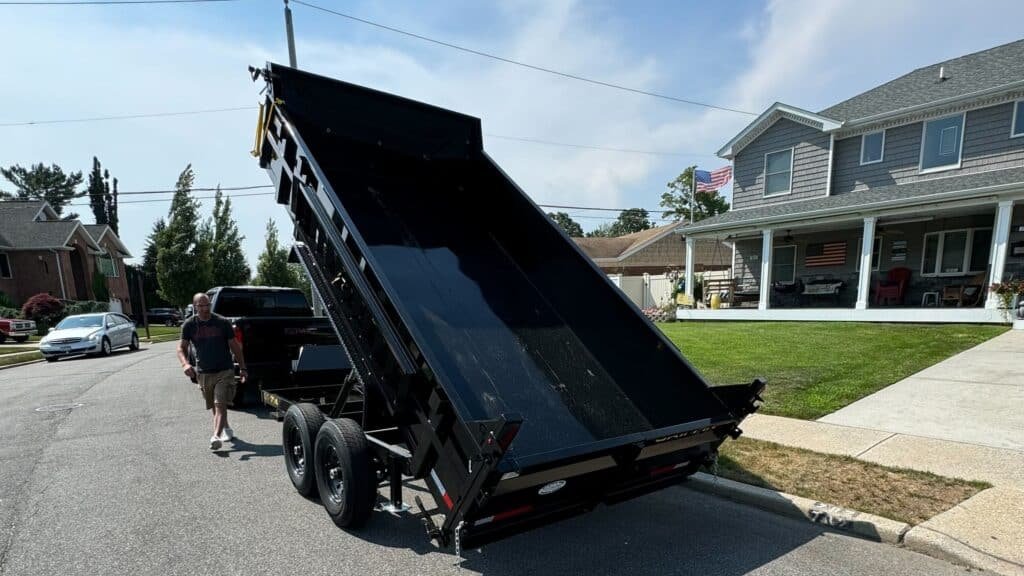Phone:
516-908-9098
Physical address:
PO Box 2446 Seaford, NY 11783

Renting a dumpster for junk removal is a smart choice when handling large cleanouts, home renovation projects, or decluttering. However, if it’s your first time renting a dumpster, there are several important factors you should know to ensure a smooth and cost-effective process.
From choosing the right size to understanding local regulations, this guide will help you navigate the process efficiently.

Before renting a dumpster, the first thing you need to do is assess how much junk you’ll need to dispose of. Dumpster sizes range from 10 to 40 yards, and choosing the right size can save you money.
Renting a dumpster that’s too small means multiple rentals, while getting one too big wastes money.
Pro Tip: For household cleanouts or small renovations, a 10-15 yard dumpster should be sufficient. For larger projects like home remodels or major cleanups, consider a 20-30 yard dumpster.
Dumpsters are designed for common junk removal, but there are restrictions on certain items.
Not all materials are allowed, and each company may have different regulations. Generally, hazardous materials such as batteries, paints, chemicals, and tires are prohibited. Electronics and appliances may also require special handling.
Items typically accepted include:
Before renting, check with your dumpster rental company for a full list of prohibited items to avoid extra charges or delays.
As mentioned, choosing the right dumpster size is crucial. You want to strike a balance between having enough space for all your junk and not paying for unnecessary capacity. Here’s a general breakdown of typical dumpster sizes:
If in doubt, consult with your rental provider—they can help you estimate the right size based on the volume of your junk.
Depending on your location, you may need a permit to place a dumpster on public property like a street or sidewalk.
Check with your local municipality or rental company to see if this applies to your situation. Failing to obtain the proper permits could result in fines.
Additionally, some cities have specific rules regarding the placement of dumpsters, such as how far they must be from certain structures or how long they can remain in place. Be sure to inquire about local regulations before finalizing your rental.
Dumpster rental fees can vary widely based on several factors, including location, dumpster size, rental period, and the type of materials you’re disposing of. Common fees include delivery, pickup, and dumping charges.
Some companies also charge based on weight, so if you’re disposing of heavy materials like construction debris, make sure you understand the weight limits to avoid extra fees.
Be clear on:
Always ask for a detailed quote upfront to avoid surprises on your bill.
Before the dumpster arrives, you need to prepare the area where it will be placed. Choose a spot that is flat, sturdy, and accessible to the delivery truck.
If you plan to put the dumpster on your driveway, consider laying down plywood or similar material to protect your surface from scratches or dents caused by the weight of the dumpster.
Make sure there’s enough clearance for the truck to drop off and pick up the dumpster without obstruction. This includes removing cars, debris, or low-hanging branches from the area.
Most dumpster rentals allow for a rental period of 7-10 days, but if you need more time, ask your provider if extended rentals are available.
Having enough time to fill the dumpster at your own pace is important, especially for larger projects like home renovations or yard clean ups.
Remember that some companies offer flexible rental durations, while others may charge per day if you exceed the initial rental agreement.
Many dumpster rental companies impose weight limits, and exceeding these can lead to additional fees. For instance, a 10-yard dumpster may have a weight limit of 2 tons, while a 30-yard dumpster could have a limit of 4-5 tons.
If you’re disposing of heavy items like bricks, concrete, or large amounts of wood, make sure you choose a dumpster size with an appropriate weight allowance. Overweight penalties can be costly, so estimating your material’s weight is key.
To get the most value from your dumpster rental, optimize the way you load it. Break down large items like furniture or boxes, and stack items neatly to maximize the available space.
Start by placing flat items at the bottom, then layer heavier debris on top. Make sure you don’t exceed the dumpster’s fill line, as overfilling may result in additional fees or removal delays.
Some additional tips for space optimization:
Dumpster availability can vary, especially during busy seasons like spring or summer when home improvement projects are common.
To avoid delays, book your dumpster rental in advance, particularly if you have a strict timeline for junk removal. Many companies offer online booking, making the process more convenient.
Booking early also allows you to lock in your desired size and rental period. Waiting until the last minute may result in limited options or higher prices.
Renting a dumpster for junk removal can simplify your clean up project, but it’s essential to be informed about the process. By understanding dumpster sizes, rental terms, local regulations, and how to prepare your space, you’ll be well-equipped to make the best decision.
Whether you’re tackling a home renovation or just clearing out clutter, following these 10 tips will ensure a smooth and efficient dumpster rental experience.
If you’re ready to start your junk removal project, contact Dumpster Guys for reliable, affordable dumpster rental services tailored to your needs.